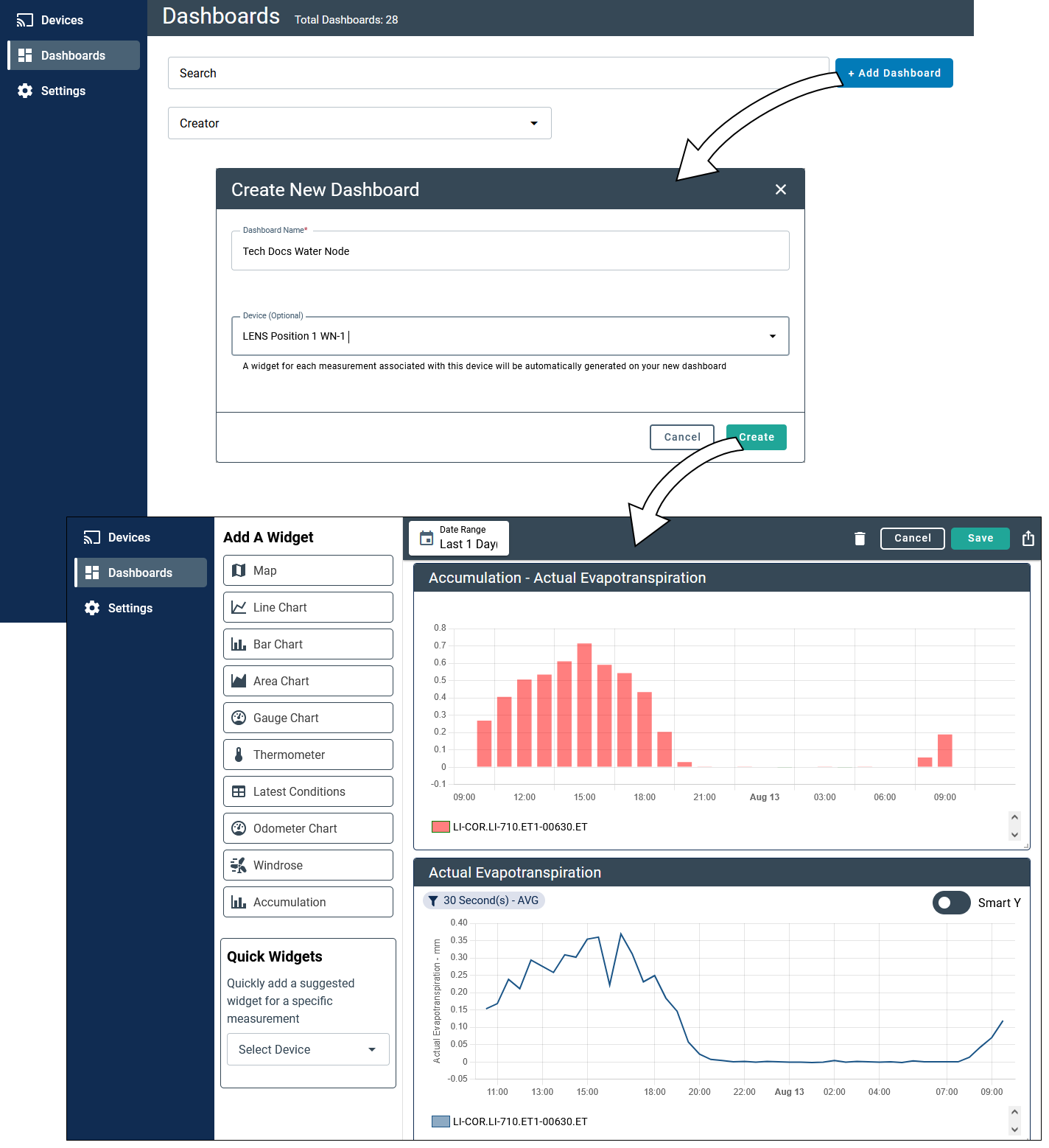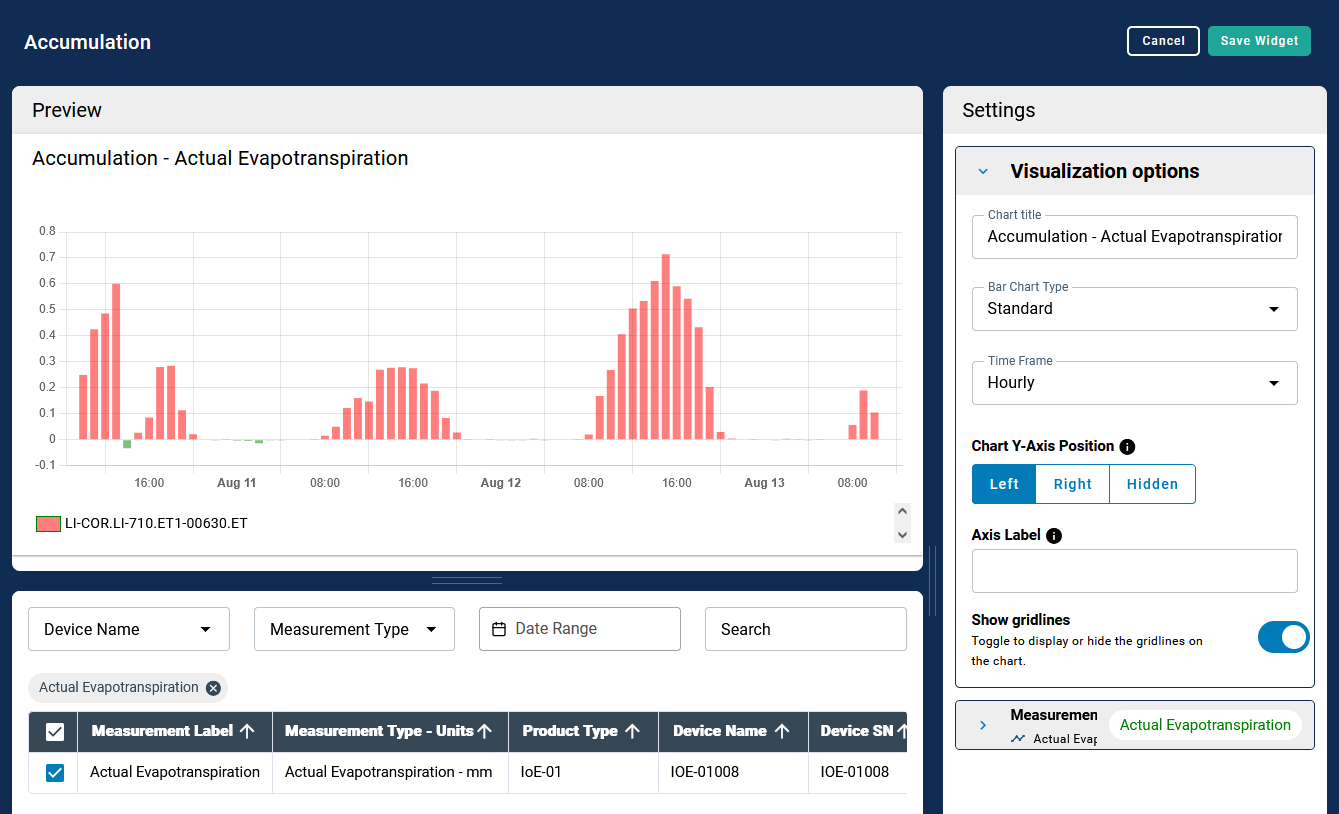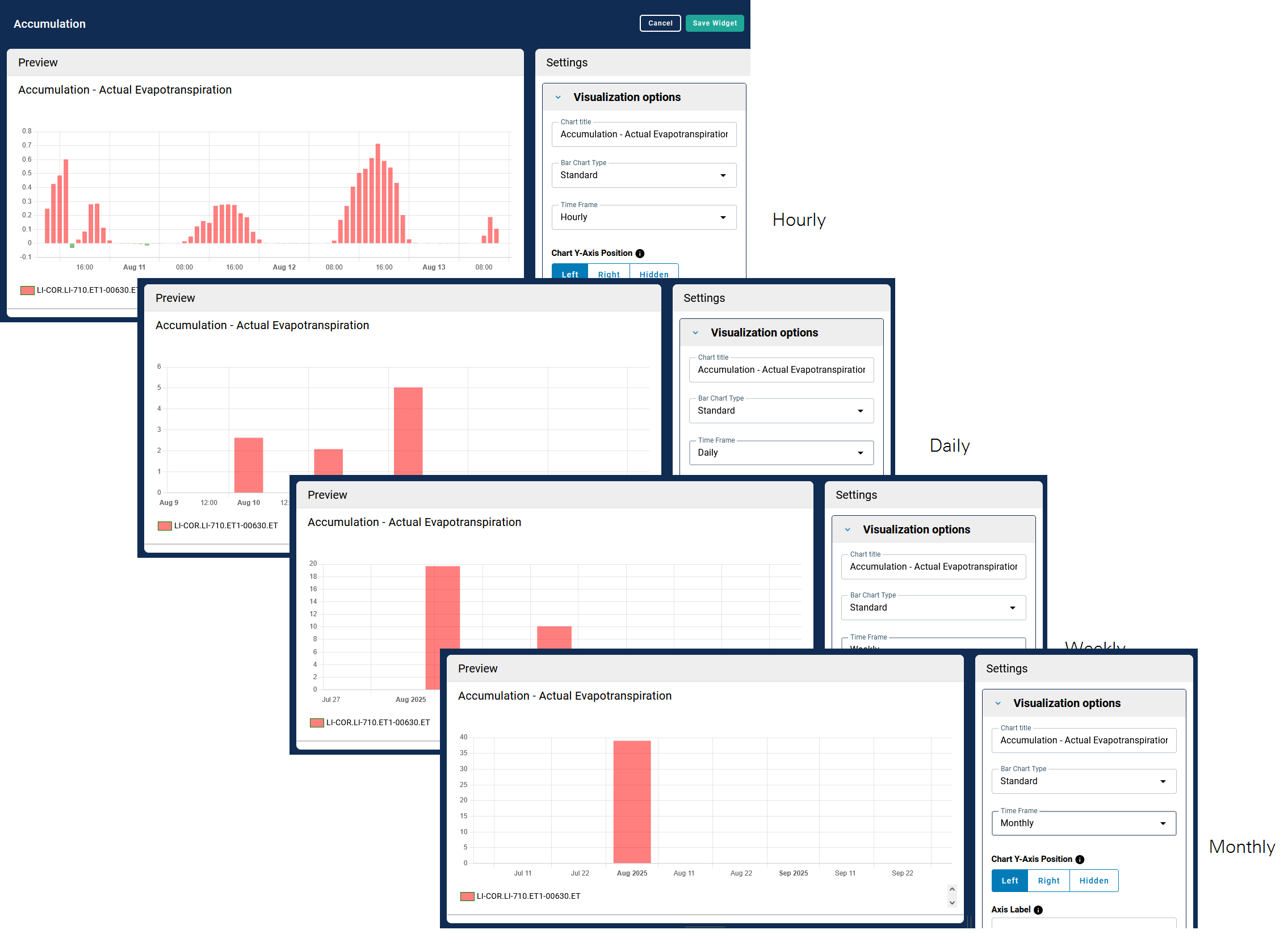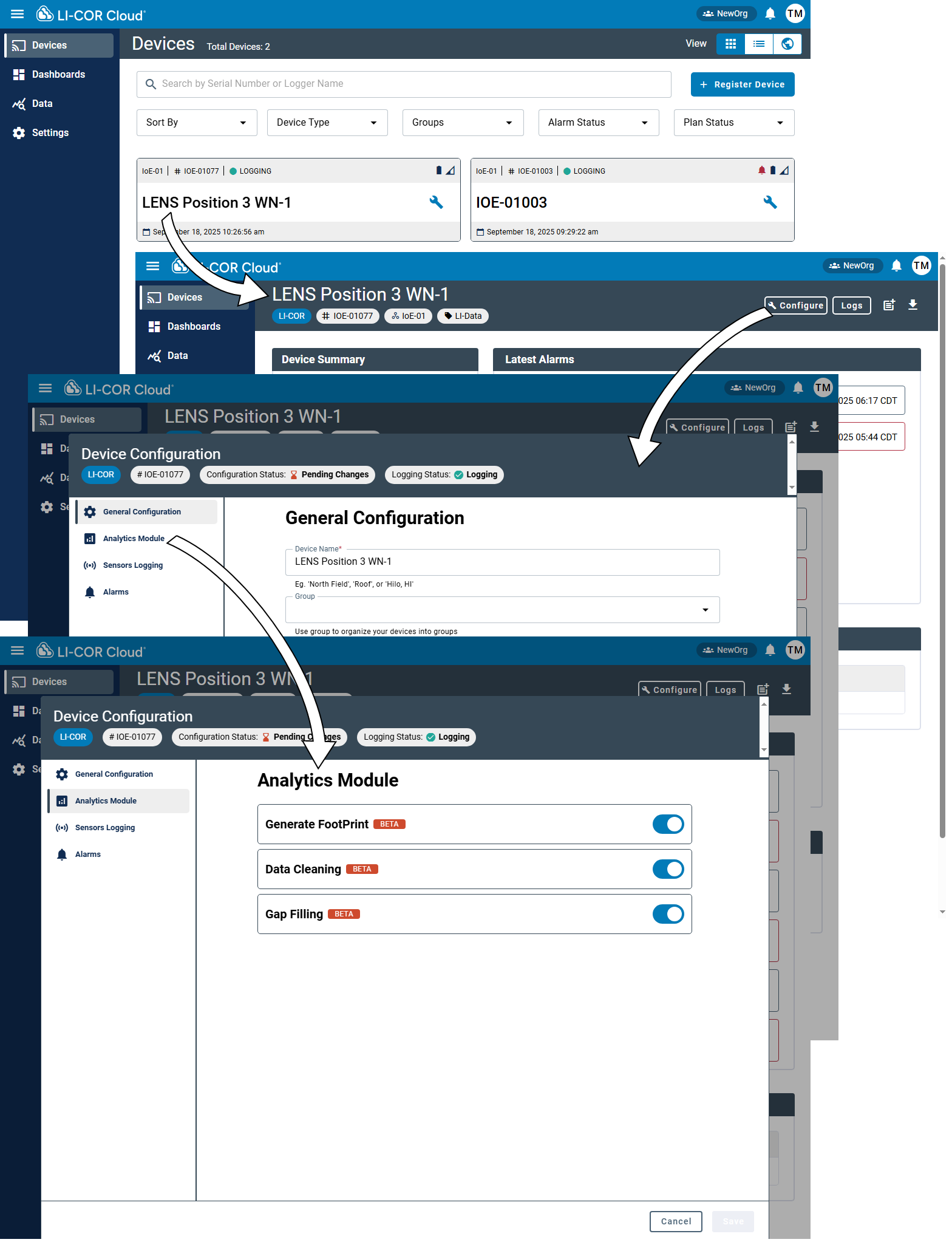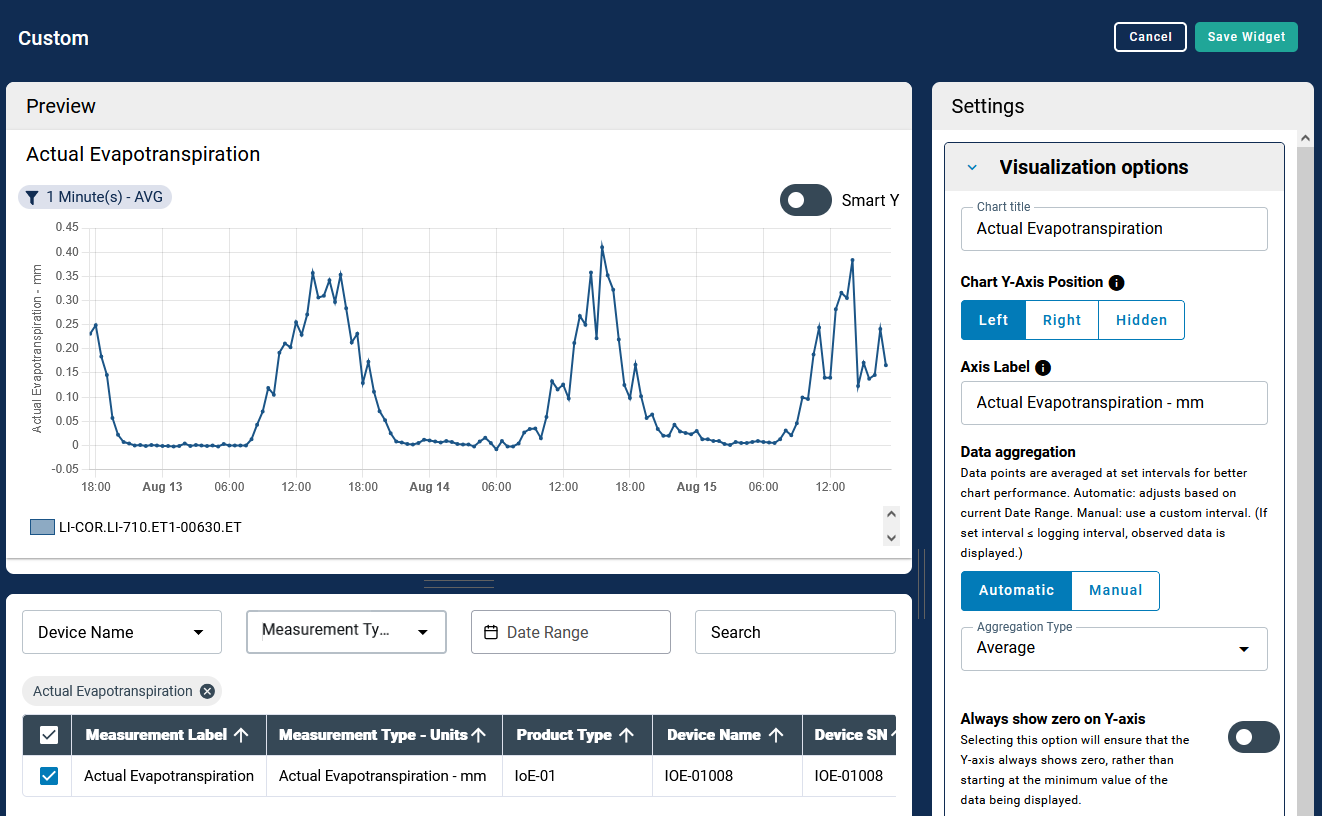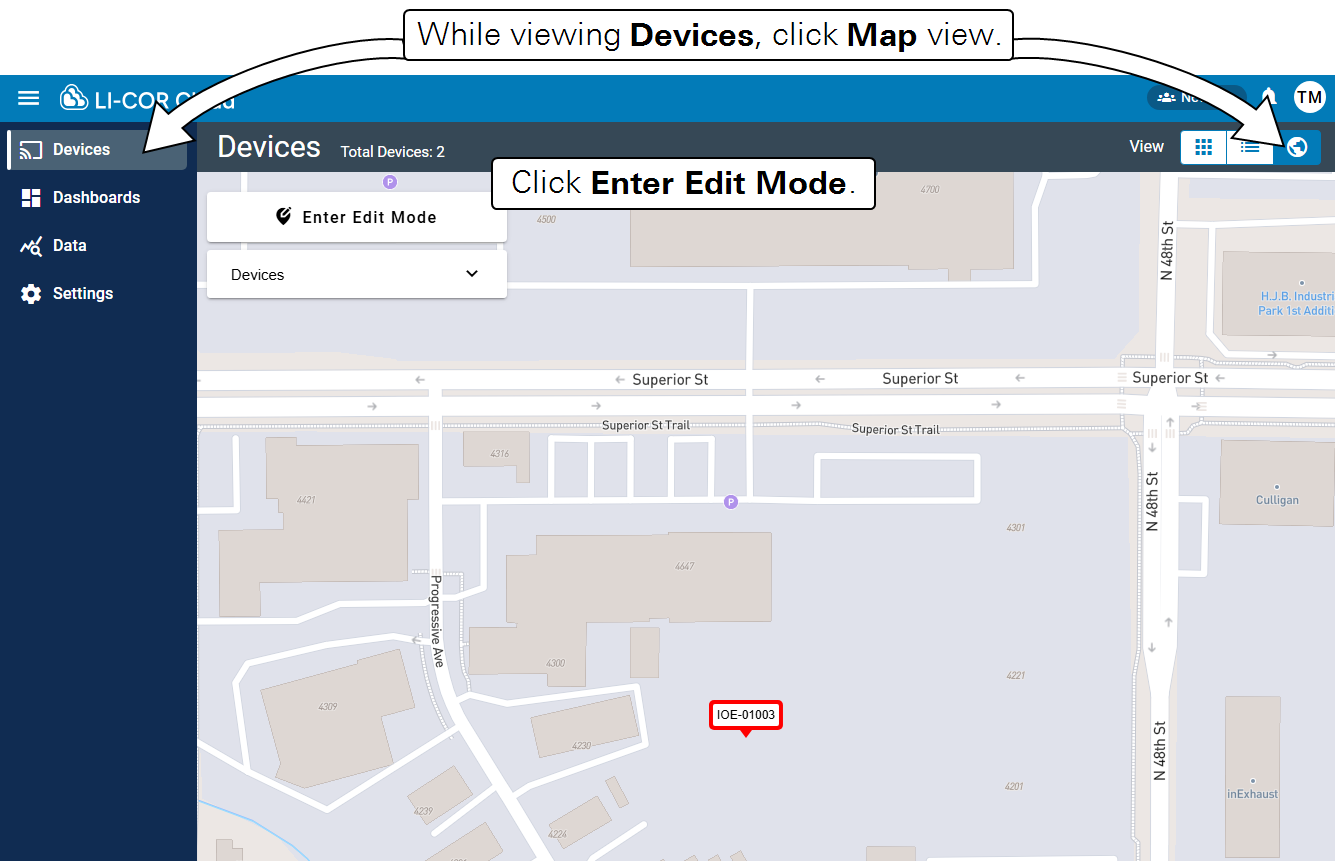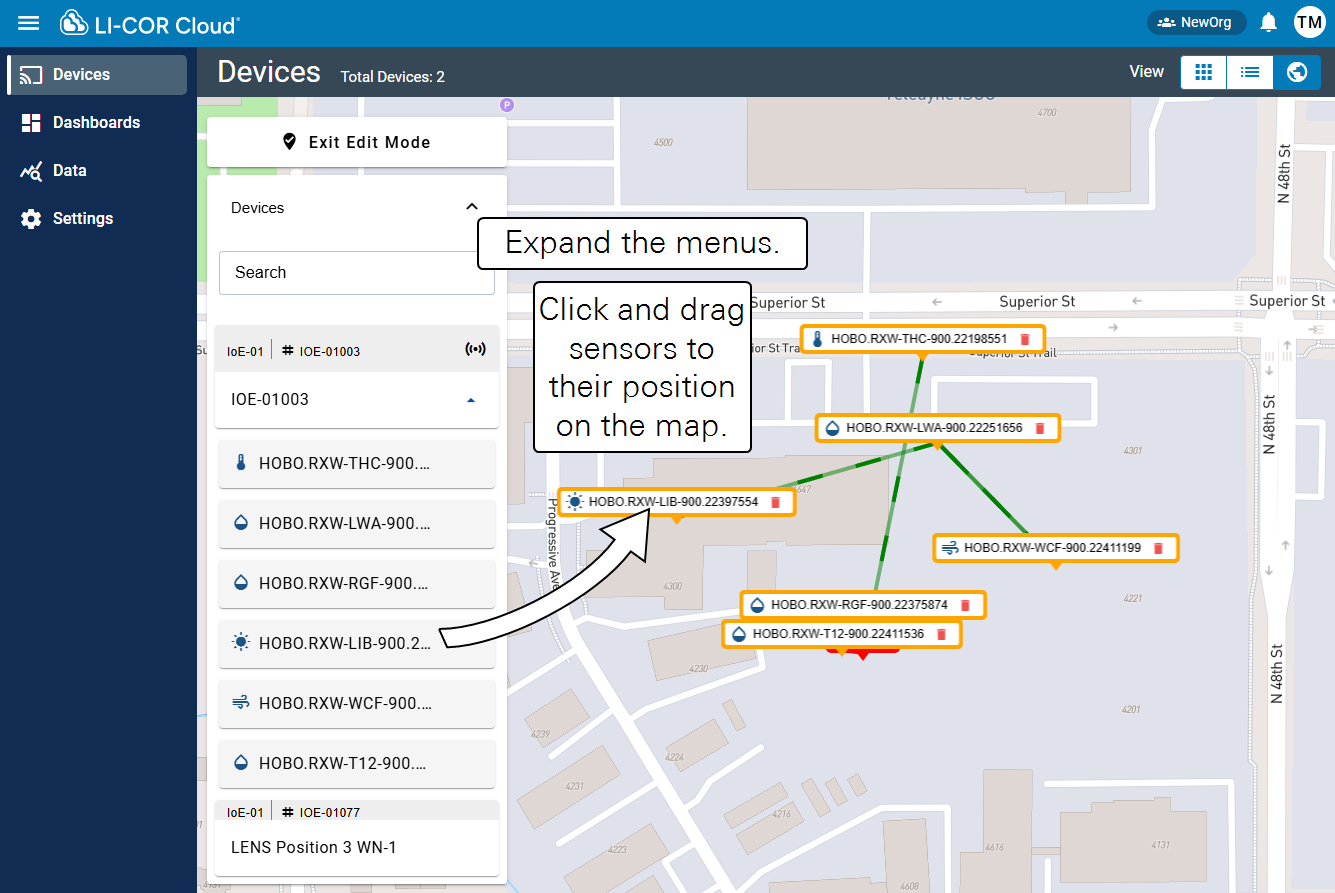Working with Water Node data
Results from a Water Node are uploaded to LI-COR Cloud on the schedule (every thirty minutes by default). Widgets are used to display data from the Water Node. Widgets may be used to with default settings or customized to show parameters from multiple sensors and different parameters from the same station.
Overview of Dashboards
To view data from an instrument, you will create a Dashboard and add Widgets to it. LI-COR Cloud will show a variety of widgets by default. You can add, move, and re-size widgets to suit your preferences. For Water Nodes, two widgets may be of special interest: Accumulation and Gap filling.
Accumulation widget
Accumulations can be computed for any variable. A chart of accumulations can show data from different instruments and parameters in the group. This maybe useful for comparison of measurements from multiple sensors or sites of different parameters that help interpret the data. To set up an accumulation widget:
-
Add a Dashboard.
Widgets relevant to Water Nodes will be added automatically after you select a Water Node, including the Evapotranspiration Line Chart and the Accumulation widgets.
-
Customize the Widget.
If you have saved the Widget, click Edit to view the Widget options. Then select the menu to view Chart Options. Use the Device Name and Measurement Type to constrain the list. This is to make it easier to find the parameter of interest. You can also search for measurements and constrain the date range.
The parameter will be added to a chart when selected.
-
Configure the display Settings, starting with Visualization Options.
Under Bar Chart Type, you can choose Standard to display bars side-by-side or Stacked to display bars on top of each other. Under Time Frame, choose Hourly, Daily, Weekly, or Monthly to change the accumulation period.
-
Apply more display properties.
You can customize the y-axis label and position, change the display parameters of each variable, and apply threshold indicators to change the color of a displayed parameter if it is outside some bounds.
-
Save the widget to display it on your dashboard.
Data cleaning, gap filling, and footprint widgets
Gap filling is a procedure that uses existing data to fill in missing data with approximations using robust statistical methods. For fluxes from a Water Node (LI-710), gap filled data are presented as a line chart, featuring the same display options. To use the feature:
-
Enable the options under Device Settings.
-
Add a Dashboard, if you haven't made one yet.
Widgets relevant to Water Nodes will be added automatically after you select a Water Node, including the Evapotranspiration Line Chart and the Accumulation widgets, among others.
-
Add more variables and configure the display settings.
You can search for variables by device name, measurement type, and more. Display properties of each parameter can be changed to bring forth the most interesting aspects of the measurement.
-
Enable the footprint in the Map widget.
-
Save the Widget settings and then save the Dashboard.
Adding RX sensors to the map
RX sensors that connected to the IoE Module via the Node Link can be displayed on the map. You'll need to specify the location of each sensor in the LI-COR Cloud interface. Follow these steps:


